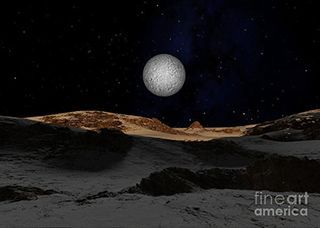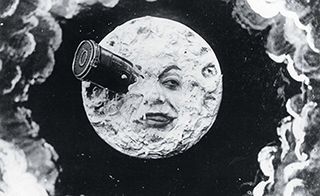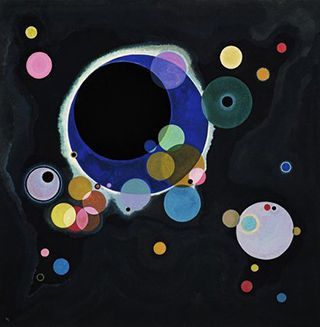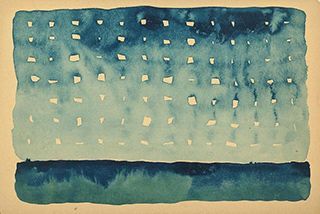Ten Modern Masters Who Elevated 'Space Art' to Astronomical Heights
A warm welcome to our latest subscriber- F.L. of Heidelberg. Our little art community is growing which is most gratifying. Thank you all for your support and a special thank you to those of you who send in information to share. Sometimes you won't see this information immediately as we like to align the incoming mail with the topics we are presenting. But rest assured that your information is appreciated and will in time appear on the blog so please keep this correspondence rolling in.
And now back into Outer Space.

- In 1915 Proxima Centauri (the nearest star to Earth—excluding the Sun) was discovered;
- in 1930 Clyde Tombaugh discovered everyone's favorite dwarf planet, Pluto;
- in 1951 the United States sent four monkeys to space;
- in 1958 NASA was founded; and:
-
in 1969 we landed on the moon.
And as a result artspace.com asks the question:
How did all of this mind-blowing, world-expanding information affect the Modern Art movement happening at the time?

ArtSpace editors have put together an interesting description of Ten Depictions of the Cosmos by Modern Masters.
I will highlight a couple of the works but please check out the article as you will find it very interesting. The article is based on a book published by Phaidon titled
The Universe: Exploring the Astronomical World and presents an extensive image-based survey of the cosmos as depicted by artists, astronomers, and visionaries dating as far back as 16,500 B.C., when the earliest representations of constellations appeared in cave paintings in Lascaux, France and Cueva del Castillo, Spain (artspace.com)
Throughout history, artists have contemplated and reflected on the human condition. And what greater human condition is there than our position on this singular planet amidst an ever-expanding celestial unknown? We've highlighted ten modern artists featured in The Universe who've grappled with the subject; evaluating humanity's intimate relationship with the cosmos in thought-provoking visual and sculptural renderings. (artspace.com)
Amongst the modern masters who painted astronomical images I think my favourite is Wassily Kandinsky (1866-1944) whose composition of a purely abstract arrangement of various-sized circles is inspiring.

While composed as a purely abstract arrangement of various-sized circles, this canvas by the Russian artist Wassily Kandinsky (1866–1944) is full of suggestions of the cosmos. Within an atmosphere of black space that swirls with undulating patters of deepest blue-grey, his round forms float like planets and overlap, some with tiny black nuclei that stare out at the viewer. Carefully executed with delicate strokes of smooth brushwork, the circles shift in colour as they overlie one another: mint green becomes forest green as a light circle of ochre drifts over it also turning bubble-gum pink into a pale, dusty tone; cherry red fades into lemon yellow; lilac purple moves as lapis-lazuli blue. Kandinsky was associated with the expressionist group Der Blaue Reiter (The Blue Rider) in Munich but returned in 1914 to his native Russia, where his works began to reflect the geometry and flat colour planes of the Suprematist and Constructivist art movements. Inspired by an expressive rather than a rational approach, Kandinsky later joined the Bauhaus group in the German city of Weimar, under the influence of which he produced this work. Kandinsky uses colour, mass and pattern to convey a calm dynamic amid the uniformity of his circles, a shape that he felt opened up a fourth dimension – one of spirituality. (spaceart.com)

With this grid of irregular white shapes (above) left amid a wash of watercolour that fades from a near-black to a pinkyviolet, the American artist Georgia O’Keeffe (1887–1986) not only captured the vastness of the night sky but also suggested the human instinct to try to impose order and pattern on what we see when we look at the heavens. O’Keeffe painted Starlight Night in 1917 and reproduced it on her Christmas cards in 1963, nearly fifty years after painting it. The painting – which features a strong, flat, deep blue horizon defined by the last vestiges of twilight, the pale blue of the night sky darkening up to the zenith, pierced by glittering stars – has echoes of the work of the Post-Impressionists, particularly Vincent van Gogh. O’Keeffe’s artistic vision was increasingly inspired by the natural world – most famously by the landscapes of New Mexico, which she visited often and to where she moved from New York to live permanently in 1949. In a letter to fellow artist Russell Vernon Hunter she offered the advice that she herself was putting into practice: ‘Try to paint your world as though you are the first man looking at it – The wind … and the cold – The dust – and the vast starlit night.’ (spcaeart.com)
Please follow this link to read about these remarkable artists including Joan Miro, Pablo Picasso and Andy Warhol.
